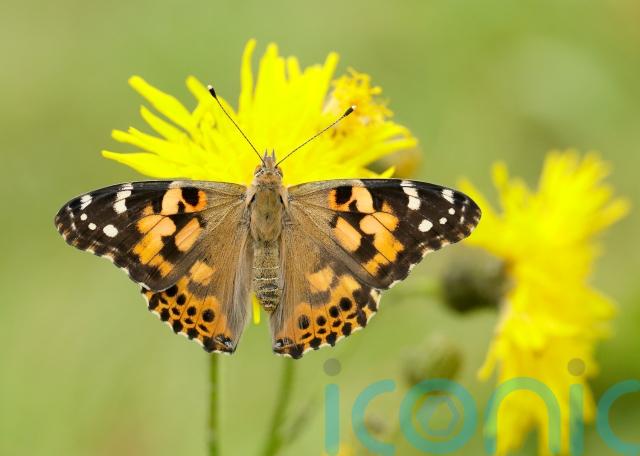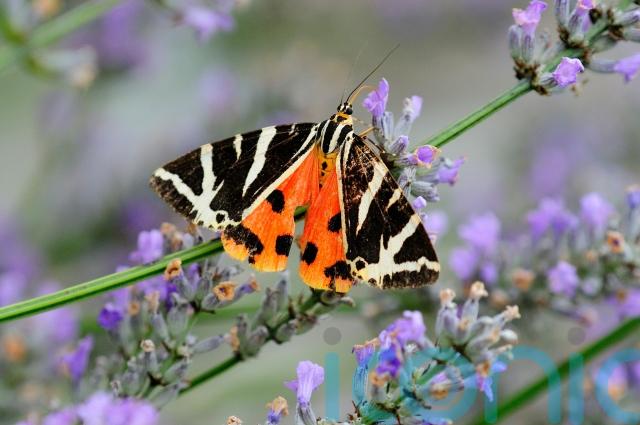
Following a bad year for butterflies in 2024, the charity Butterfly Conservation is stressing it’s more important than ever that people take part in this year’s Big Butterfly Count.
Last year the charity declared a nationwide butterfly emergency because of declining butterfly numbers, after participants in the annual survey spotted just seven butterflies on average per 15-minute count in 2024, a reduction of almost 50% on 2023’s average of 12, and the lowest in the history of the Big Butterfly Count.
It was also the worst summer in the count’s history for a number of popular species including small tortoiseshell and common blue.
“Currently, more than half of the UK’s butterfly species are in long-term decline,” warns Kate Bradbury, garden writer, TV presenter and Butterfly Conservation ambassador.
She continues: “You don’t need a huge garden to help wildlife. By planting nectar-rich flowers, letting an area of grass grow long and incorporating caterpillar food plants like native shrubs, you can support a number of caterpillars and moths in even the tiniest space.
“Even pots and hanging baskets, planted with lavender, salvia or Mediterranean herbs like oregano and mint, can be the perfect refuelling station in the smallest space.”
1. Small tortoiseshell
2. Common blue
The number of common blue butterflies counted in 2024 was 69% lower than in 2023, with numbers down in England, Scotland and Wales but up in Northern Ireland. Find this butterfly in grassy habitats and sunny but sheltered spots such as coastal dunes, under cliffs, road verges and woodland clearings.
3. Painted lady

Another species that was down in numbers last year, this amazing long-distance migrant is normally seen between May and October, arriving in the UK after a phenomenal 9,000-mile migratory journey – one of the longest in the animal kingdom – from tropical Africa to the Arctic Circle. The journey is completed in stages by up to 10 generations of painted ladies, like a long-distance relay.
The number of painted ladies that arrive in the UK varies each year and last year was the worst on record. Their migration tracks the availability of food plants for their hungry caterpillars, ensuring they can complete their life cycle year-round.
These large, fast-flying butterflies prefer open, dry landscapes but can be found in almost any open space, from gardens to mountaintops or beaches. Their favourite source of nectar is thistles, but they will also visit bramble, ivy, knapweeds, buddleia, heathers and a variety of other flowers. Look for their distinctive patterned black, white and pinky-orange wings.
4. Small copper
Males are territorial, so can often be found basking on a bare piece of ground or a warm stone while they wait for passing females. They will chase off passing insects before returning to the same spot to continue their waiting game.
This species declined in the 20th century and figures from last year’s count show that trend continuing, with a 30% decline across the UK, with Northern Ireland and Wales seeing particularly low numbers.
5. Jersey tiger moth

One of three day-flying moths for which the survey collects data, with its wings folded it has beautiful zebra-like stripes in black and cream, but when it spreads its wings to fly, its hindwings are vibrant orange-red with black markings.
This moth may be seen visiting flowers such as buddleia during the day, but also flies at night and is attracted to light. Its contrasting fore and hindwings allow it to camouflage among the speckled light and shadows of foliage.
Jersey tigers lay their eggs on dandelions, nettles, brambles and other plants often considered to be weeds. It was once only found on the south coast of Devon, England, but in recent years has been on the move, with sightings recorded in Cornwall, South Wales, Sussex and Kent, as well as London, the Isle of Wight and Hampshire.
This migration has been attributed to the UK’s warming climate, which is allowing it to venture further north.
Butterfly Conservation’s Big Butterfly Count runs from Jul 18 to Aug 10. For more information visit www.bigbutterflycount.org or download the free Big Butterfly Count app.
Subscribe or register today to discover more from DonegalLive.ie
Buy the e-paper of the Donegal Democrat, Donegal People's Press, Donegal Post and Inish Times here for instant access to Donegal's premier news titles.
Keep up with the latest news from Donegal with our daily newsletter featuring the most important stories of the day delivered to your inbox every evening at 5pm.